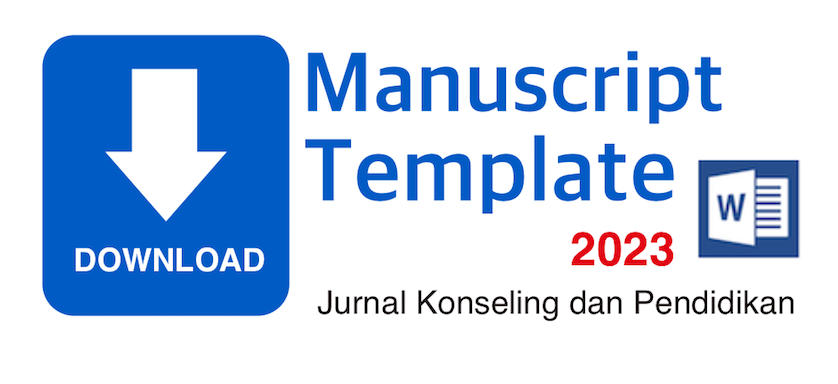Feasibility of material and media aspects of guidebook for group guidance implementation with the socratic method to increase anti-bullying awareness of middle school students
 ), Suwarjo Suwarjo(2),
), Suwarjo Suwarjo(2), (1) Universitas Negeri Yogyakarta
(2) Universitas Negeri Yogyakarta
 Corresponding Author
Corresponding Author
DOI : https://doi.org/10.29210/148700
Full Text:
 Language : id
Language : id
Abstract
Keywords
References
Adit, G. N., Hendriana, H., & Rosita, T. (2019). No Title. Fokus (Kajian Bimbingan & Konseling dalam Pendidikan), 2(6), 65–79.
Alfarisi, R. S., & Suseno, S. (2019). Pengembangan Buku Pengayaan Menulis Teks Anekdot Bermuatan Cinta Tanah Air. KREDO : Jurnal Ilmiah Bahasa dan Sastra, 3(1), 102–115. https://doi.org/10.24176/kredo.v3i1.3950
Alfiyah, M. N. (2016). Keefektifan Metode Dialog Socrates untuk Meningkatkan Keterampilan Berpikir Kritis Siswa MTs (Skripsi, Universitas Negeri Malang). Universitas Negeri Malang.
Andriawan, P. R. D. (2018). Pengembangan Panduan Konseling Realitas untuk Meningkatkan Kemampuan Konseling Individual Guru Bimbingan dan Konseling SMA di Kota Yogyakarta (Tesis, Universitas Negeri Yogyakarta). Universitas Negeri Yogyakarta.
Arinata, F. S., Sugiyo, & Purwanto, E. (2017). Keefektifan Bimbingan Kelompok Teknik Modeling dan Pengukuhan Positif untuk Mengurangi Perilaku Bullying Siswa SD. Jurnal Bimbingan Konseling, 6(2), 154–158.
Ballerina, T., & Immanuel, A. S. (2019). Gambaran Tindakan Bullying pada Siswa Sekolah Menengah Pertama. Jurnal Ilmu Perilaku, 3(1), 18–31. https://doi.org/10.25077/jip.3.1.18-31.2019
Borg, W. R. (1981). Appliying Educational Research, a Practical Guide for Teacher. New York: Longman.
Chaplin, J. P. (2002). Kamus lengkap psikologi (Edisi asli). Jakarta: PT. RajaGrafindo Persada.
Coffey, H. (2010). Socratic method.
Daryanto. (2013). Media Pembelajaran: Peranannya sangat Penting dalam Mencapai Tujuan Pembelajaran. Yogyakarta: Penerbit Gava Media.
Delic, H., & Becirovic, S. (2016). Socratic Method as an Approach to Teaching. European Researcher, 111(10), 511–517. https://doi.org/10.13187/er.2016.111.511
Haryani, D. (2012). Membentuk siswa berpikir kritis melalui pembelajaran matematika. Seminar Nasional Matematika dan Pendidikan Matematika FMIPA UNY, (November), 165–174. Yogyakarta: Universitas Negeri Yogyakarta. Diambil dari http://eprints.uny.ac.id/7512/1/P - 17.pdf
Hidayat, N. S. (2016). Perancangan Buku Panduan Wisata Kabupaten Purwakarta. e-Proceeding of Art & Design, 3(3), 546–551. Bandung: Universitas Telkom.
Khairuntika. (2016). Metode Socrates dalam Mengembangkan Kemampuan Berpikir Kritis Siswa. Konferensi Nasional Penelitian Matematika dan Pembelajarannya (KNPMP I), (ISSN: 2502-6526), 89–98. Surakarta: Universitas Muhammadiyah Surakarta.
Kurniawan, D. E., & Pranowo, T. A. (2018). Bimbingan Kelompok dengan Teknik Sosiodrama Sebagai Upaya Mengatasi Perilaku Bullying di Sekolah. Jurnal Bimbingan dan Konseling Terapan, 2(1), 50–60. Diambil dari http://ojs.unpatti.ac.id/index.php/bkt
Linasari, T. (2016). Keefektifan Videotherapy dalam Menumbuhkan Kesadaran Anti-Bullying Pada Siswa Kelas V. Jurnal Pendidikan Guru Sekolah Dasar, 36(5), 3438–3448.
Masrur, H., Corebima, A. D., & Ghofur, A. (2017). Pengembangan Buku Suplemen Mutasi Gen pada Matakuliah Genetika. Jurnal Pendidikan, 2(9), 1160–1167.
Nurihsan, A. J. (2005). Strategi Layanan Bimbingan & Konseling. Bandung: PT. Refika Aditama.
Octavianto, M. R. (2017). Perilaku Bullying di Sekolah Menengah Atas Kota Yogyakarta. Jurnal Riset Mahasiswa Bimbingan dan Konseling, 3(8), 376–385.
Okezone. (2015). Psikolog: Siswa Harus Dilatih untuk Mencegah Bullying. Diambil 6 Juli 2019, dari okezone.com website: https://news.okezone.com/read/2015/09/10/65/1211820/psikolog-siswa-harus-dilatih-untuk-mencegah-bullying
Qodar, N. (2015). Survei ICRW: 84% Anak Indonesia Alami Kekerasan di Sekolah. Diambil 4 Juli 2019, dari liputan6.com website: https://www.liputan6.com/news/read/2191106/survei-icrw-84-anak-indonesia-alami-kekerasan-di-sekolah
Rakhmawati, E. (2013). Pengaruh Layanan Bimbingan Kelompok terhadap Perilaku Bullying pada Siswa Kelas VIII SMP H Isriati. Jurnal Penelitian PAUDIA, 2(1), 142–162.
Sitepu, B. P. (2015). Penulisan Buku Teks Pelajaran. Bandung: PT Remaja Rosdakarya.
Sugiyono. (2014). Metode Penelitian Kuantitatif Kualitatif dan R&D. Bandung: Alfabeta.
Widyaningrum, E., H, S. A., & Iqbal, M. (2015). Pengembangan Produk Penelitian Berupa Buku Nonteks sebagai Buku Pengayaan Pengetahuan ( The Developing of Research Product in the Form Non-Text Book as a Knowledge Enrichment Book ). Artikel Ilmiah Mahasiswa, 1(1), 1–5.
Witabora, J. (2012). Peran dan Perkembangan Ilustrasi. Humaniora, 3(2), 659–667. https://doi.org/10.21512/humaniora.v3i2.3410
 Article Metrics
Article Metrics
 Abstract Views : 586 times
Abstract Views : 586 times
 PDF Downloaded : 222 times
PDF Downloaded : 222 times
Refbacks
- There are currently no refbacks.

This work is licensed under a Creative Commons Attribution 4.0 International License.




